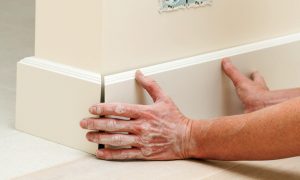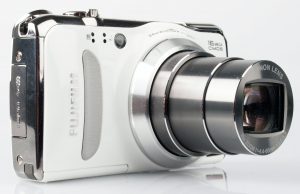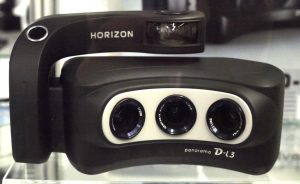Hard Drive Capacity And Performance
A hard disk is one of the main storage media for a computer, It’s consisting of one or more aluminum or glass discs. The magnetic material is covered outside the disc.
Hard disk has a solid state disk (SSD disk, new hard disk), mechanical hard disk (HDD traditional hard disk), mixed hard disk (a new hard disk based on traditional mechanical hard disk). SSD uses flash memory particles to store, HDD uses magnetic disk to store, mixed hard disk (HHD: Hybrid Disk) is a hard disk that integrates magnetic hard disk and flash memory. The vast majority of hard drives are fixed drives that are permanently sealed and fixed in a hard disk drive.
When you buy the hard disk, you probably will find that the actual capacity of the hard disk will be smaller than the parameters marked, such as the purchase of 3TB hard disk, click on the computer properties to view the capacity of hard drive, that capacity is only 2.72TB, the differences are 0.28TB, which is equal to more than half of the 500GB hard disk. Will you feel being cheated?
However, When it comes to the capacity conversion of a hard disk, Manufacturers choose the decimal system while computer use binary system. The conversion between them needed.
Here’s the different capacity calculation formula:
Hard disk vendor decimal calculation:
3000GB = 3000,000MB = 3000,000,000KB = 3000,000,000,000Byte
Operating system binary calculation:
3000GB = 3072,000MB = 3,145,728,000KB = 3,221,225,472,000Byte
1GB of the actual byte (Byte) calculation:
1GB = 1024MB * 1024KB * 1024Byte = 1,073,741,824Byte
The actual capacity of 3000GB:
3000,000,000,000Byte / (1024MB * 1024KB * 1024Byte) = 2793.97GB
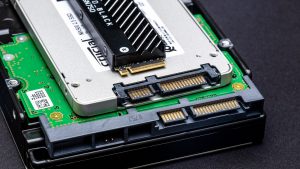
Why the actual capacity of a 3TB hard drive is 2794.39GB? when manufacturers are producing the hard drive, the disk will be left 0.1-1GB capacity, so the actual capacity is slightly larger than the 2793.97GB.
So in the conversion of 2794.39GB into TB, So in the conversion of TB into the 2794.39GB, after deducting the area occupied by 177MB, the remaining capacity divided by 1024GB, the actual capacity is equal to 2.72TB after rounding, which is the origin capacity of 2.72TB.
So what are the main performance of a Hard drive?
1. Capacity
The capacity of the hard disk is one of the most important technical indicators to measure a hard disk. The capacity of the hard disk is determined by the number of disks (the number of heads), the number of cylinders and the number of sectors, and the formula is as follows: the capacity of the hard disk = the number of disks X the number of the cylinder X the number of the sector X 512B. There are often a number of stacked disk inside the hard disk, therefore, the hard disk capacity can also be calculated: hard disk capacity = disk capacity x disk number.
2. Rotation Speed
Hard disk speed (Rotation Speed) has a direct impact on the data rate of the hard disk, the speed is one of the decisive factors in the transmission rate of the hard disk, but also an important symbol to distinguish the hard disk. In theory, the faster the better, because the higher speed can reduce the average search time and the actual hard disk read / write time, which can improve the read / write speed on the hard disk. But everything has two sides, while the speed increases, the heat of the hard disk will increase, its stability will be reduced to a certain extent. Today the mainstream hard disk speed is 5400rpm (Rev / min), 7200rpm and 10000rpm. 7200rpm hard disk has become mainstream.
3. Cache
Cache (Cache) is the place where the hard disk exchanges data with the external bus. Simply put, the bigger cache capacity on the hard disk the better, large capacity cache is good at improving the speed of the hard disk, the hard disk cache capacity in current market is usually 2MB ~ 8MB.
4. Average Seek Time
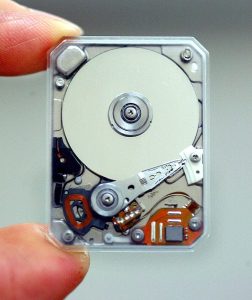
Average seek time (Average Seek Time) refers to the track of the time that the hard disk head to the data, in milliseconds (MS). Average search time is generally between 5ms ~ 13ms.
5. Hard disk data transfer rate
Hard disk data transfer rate (Data Transfer Rate), also known as throughput rate, It means after the head positioning, the speed that hard disk to read or write data.
6. Mean Time Between Failure, MTBF
MTBF refers to the longest time that the hard disk from the start to the failure. the unit is an hour. General hard disk MTBF is at least 30000 — 40000 hours. This indicator is not available in the general product ads or common technical features, but can be checked in a specific production of the company’s Web site.



